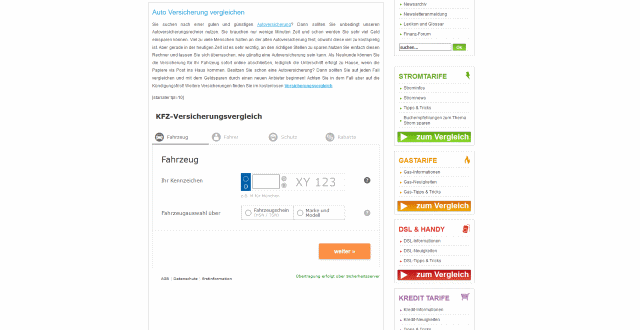Microinvesting: Democratizing Wealth Building for the Digital Age
In a world where financial barriers often seem insurmountable, a new investment approach is gaining traction, promising to level the playing field for aspiring investors. Microinvesting, the practice of investing small sums of money regularly, is revolutionizing how individuals build wealth. This innovative strategy leverages technology to make investing accessible to everyone, regardless of their financial standing or expertise. As traditional investment methods evolve, microinvesting emerges as a powerful tool for financial inclusion and long-term wealth creation.

The Genesis of Microinvesting
Microinvesting finds its roots in the broader concept of microfinance, which gained prominence in the 1970s as a means to provide financial services to underserved populations. However, it wasn’t until the advent of mobile technology and fintech innovations that microinvesting truly came into its own. The first microinvesting platforms emerged in the mid-2010s, capitalizing on the widespread adoption of smartphones and the increasing demand for more accessible investment options.
These platforms revolutionized the investment landscape by allowing users to invest spare change from everyday transactions. For instance, a $3.50 coffee purchase could be rounded up to $4.00, with the $0.50 difference automatically invested in a diversified portfolio. This approach eliminated many of the traditional barriers to entry in investing, such as high minimum investment requirements and complex financial knowledge.
How Microinvesting Works
At its core, microinvesting operates on the principle of incremental wealth building. Users connect their bank accounts or credit cards to a microinvesting app, which then facilitates small, regular investments based on spending habits or predetermined rules. These micro-contributions are pooled together and invested in diversified portfolios, typically consisting of low-cost ETFs (Exchange-Traded Funds) that track broad market indices.
The beauty of microinvesting lies in its simplicity and automation. Once set up, the process requires minimal intervention from the user, making it an ideal solution for those who find traditional investing intimidating or time-consuming. Moreover, by leveraging the power of compound interest over time, even small, consistent investments can grow into significant sums.
The Impact on Financial Inclusion
One of the most significant impacts of microinvesting has been its role in democratizing access to financial markets. Traditionally, investing was often perceived as a privilege reserved for the wealthy or financially savvy. Microinvesting platforms have shattered this perception by:
-
Lowering barriers to entry: With some platforms allowing investments as low as $1, microinvesting has made it possible for virtually anyone to start building an investment portfolio.
-
Simplifying the investment process: By offering pre-built portfolios and automated investing features, these platforms have removed the need for extensive financial knowledge.
-
Encouraging financial literacy: Many microinvesting apps incorporate educational resources, helping users learn about investing principles and market dynamics as they grow their portfolios.
-
Promoting consistent saving habits: The automated nature of microinvesting fosters discipline in saving and investing, a crucial factor in long-term financial success.
Microinvesting and Behavioral Finance
The success of microinvesting can be partly attributed to its alignment with principles of behavioral finance. By breaking down investments into small, manageable amounts, microinvesting overcomes psychological barriers that often prevent individuals from starting their investment journey. This approach capitalizes on several behavioral finance concepts:
-
Loss aversion: The small scale of investments helps mitigate the fear of significant losses, encouraging participation.
-
Mental accounting: By tying investments to everyday transactions, microinvesting makes the process feel less like a separate financial activity and more like an extension of regular spending.
-
Present bias: The immediate action of investing small amounts provides instant gratification, countering the tendency to prioritize short-term gains over long-term benefits.
Challenges and Considerations
While microinvesting offers numerous benefits, it’s not without challenges. Critics argue that the small scale of investments may lead to relatively modest returns, especially when factoring in fees. Additionally, the simplicity of these platforms may discourage users from developing a deeper understanding of financial markets and more advanced investment strategies.
Investors should also be aware of the potential for overreliance on microinvesting. While it’s an excellent starting point, a comprehensive financial strategy might require additional savings and investment approaches as one’s financial situation evolves.
The Future of Microinvesting
As technology continues to advance, the future of microinvesting looks promising. We’re likely to see further innovations in this space, including:
-
Enhanced personalization: AI and machine learning could tailor investment strategies more precisely to individual goals and risk tolerances.
-
Integration with other financial services: Microinvesting may become part of broader financial ecosystems, offering seamless connections with budgeting tools, retirement planning, and more.
-
Expanded investment options: Future platforms might offer access to a wider range of assets, potentially including real estate or private equity investments at micro scales.
-
Social investing features: Collaborative investing and social learning elements could further engage users and promote financial education.
Practical Microinvesting Tips for Beginners
-
Start small: Begin with amounts you’re comfortable with, even if it’s just spare change.
-
Automate your investments: Set up recurring investments to build consistency.
-
Diversify: Choose platforms that offer diversified portfolios to spread risk.
-
Monitor fees: Be aware of any fees associated with the service and how they impact your returns.
-
Educate yourself: Use the educational resources provided by microinvesting apps to enhance your financial knowledge.
-
Gradually increase your investments: As you become more comfortable, consider increasing your contribution amounts.
-
View microinvesting as a starting point: Use it as a stepping stone to more comprehensive investment strategies as your wealth grows.
In conclusion, microinvesting represents a significant shift in the investment landscape, making wealth-building opportunities more accessible than ever before. By leveraging technology to overcome traditional barriers, it has opened the door for a new generation of investors to take their first steps towards financial security. While it’s not a one-size-fits-all solution, microinvesting offers a valuable entry point into the world of investing, fostering financial inclusion and empowering individuals to take control of their financial futures.




